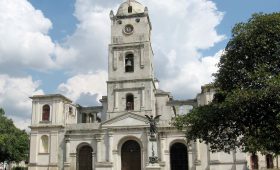Exploring the Imatong Mountains
The Imatong Mountains in South Sudan offer a unique travel experience for those willing to venture off the typical tourist path. Located about 190 kilometers southeast of Juba, this mountain range is a striking feature of the landscape, rising sharply from the surrounding plains. The mountains are primarily situated within Torit and Ikotos Counties of Imatong State, and they provide a fascinating blend of natural beauty and cultural richness.
Natural Beauty and Geography
The Imatong Mountains are characterized by rugged peaks and lush greenery. The highest point, Mount Kinyeti, reaches an impressive 3,187 meters. The range is composed of crystalline basement rock, with leucocratic gneisses rich in quartz being the most common. The mountains are sharply faulted, creating a dramatic landscape that is the source of many year-round rivers.
The area is ecologically diverse, with habitats ranging from deciduous woodland and bamboo thickets in the lower regions to montane forests and Hagenia woodlands at higher elevations. The mountains’ isolation has allowed for the development of unique flora and fauna, including species found nowhere else in South Sudan.
Cultural Heritage
The Imatong Mountains are home to several indigenous tribes, each with its own distinct customs and traditions. Engaging with the local communities offers a deeper understanding of the region’s cultural heritage. Visitors can learn about traditional practices and the history of the people who have lived in this area for centuries.
Best Time to Visit
The ideal time to explore the Imatong Mountains is during the dry season, from December to February. During these months, the weather is mild and conducive to outdoor activities like hiking. The wet season, from June to September, brings heavy rainfall, which can make trails difficult to navigate.
Getting There
Travelers typically fly into Juba International Airport, the main entry point to South Sudan. From Juba, the Imatong Mountains are about a 4-5 hour drive, depending on road conditions. The journey offers a glimpse of South Sudan’s diverse landscapes, from urban areas to rural villages.
Local Transportation and Exploration
Once in the Imatong Mountains, transportation options are limited. The best way to explore is on foot, ideally with a local guide who can provide insights into the area’s natural and cultural features. The terrain can be challenging, so visitors should be prepared with sturdy hiking boots, comfortable clothing, and plenty of water.
Practical Considerations
While the Imatong Mountains offer breathtaking scenery and cultural experiences, travelers should be aware of the challenges. The region’s infrastructure is limited, and visitors should plan accordingly. It’s essential to respect local customs and be mindful of the environmental impact of your visit.
For those seeking an adventure that combines natural beauty with cultural immersion, the Imatong Mountains are a compelling destination. With careful planning and an open mind, travelers can enjoy a truly unique experience in this remarkable part of South Sudan.




